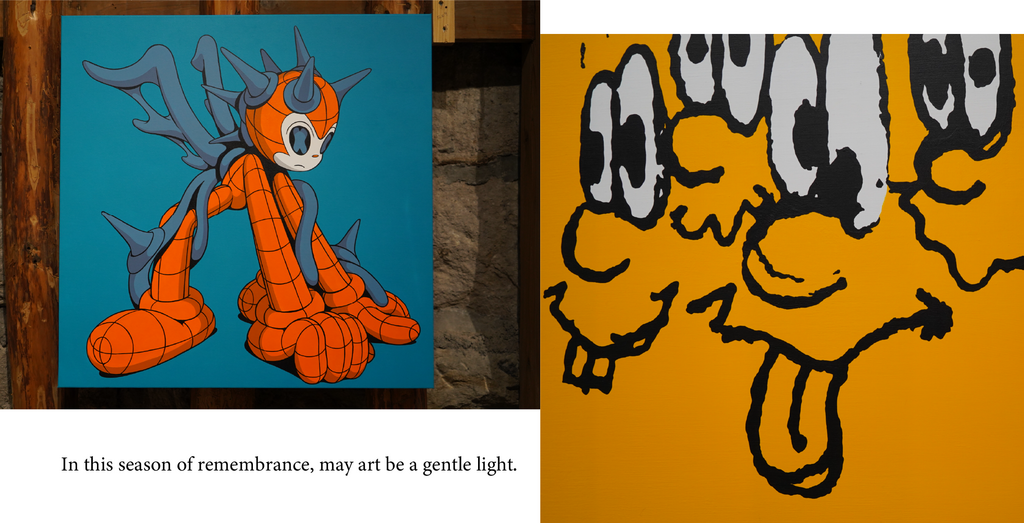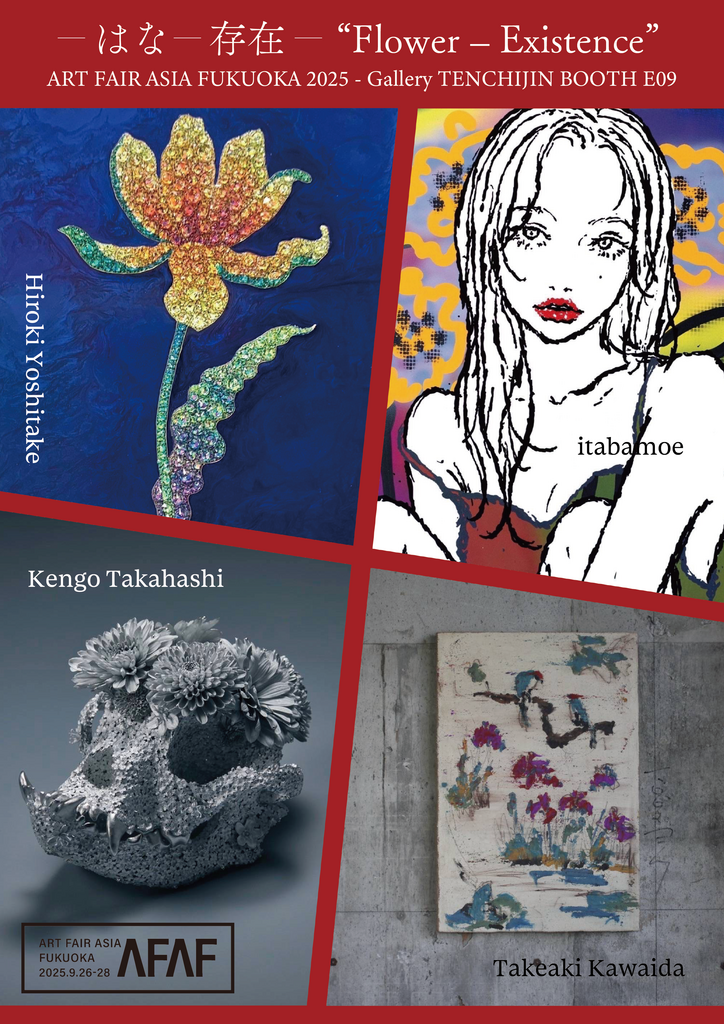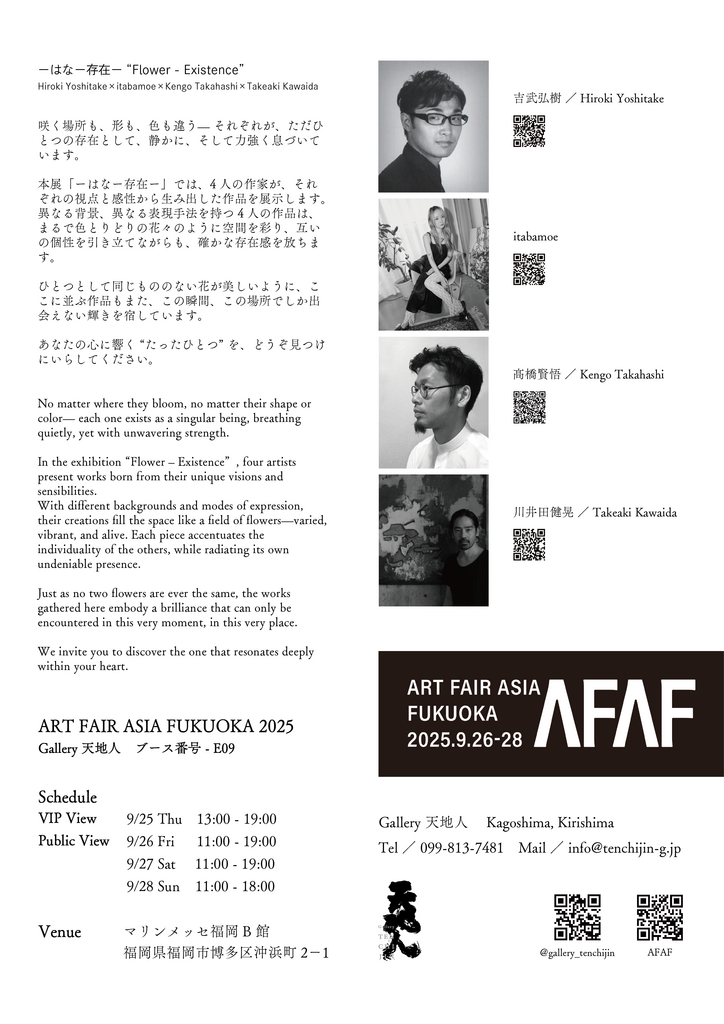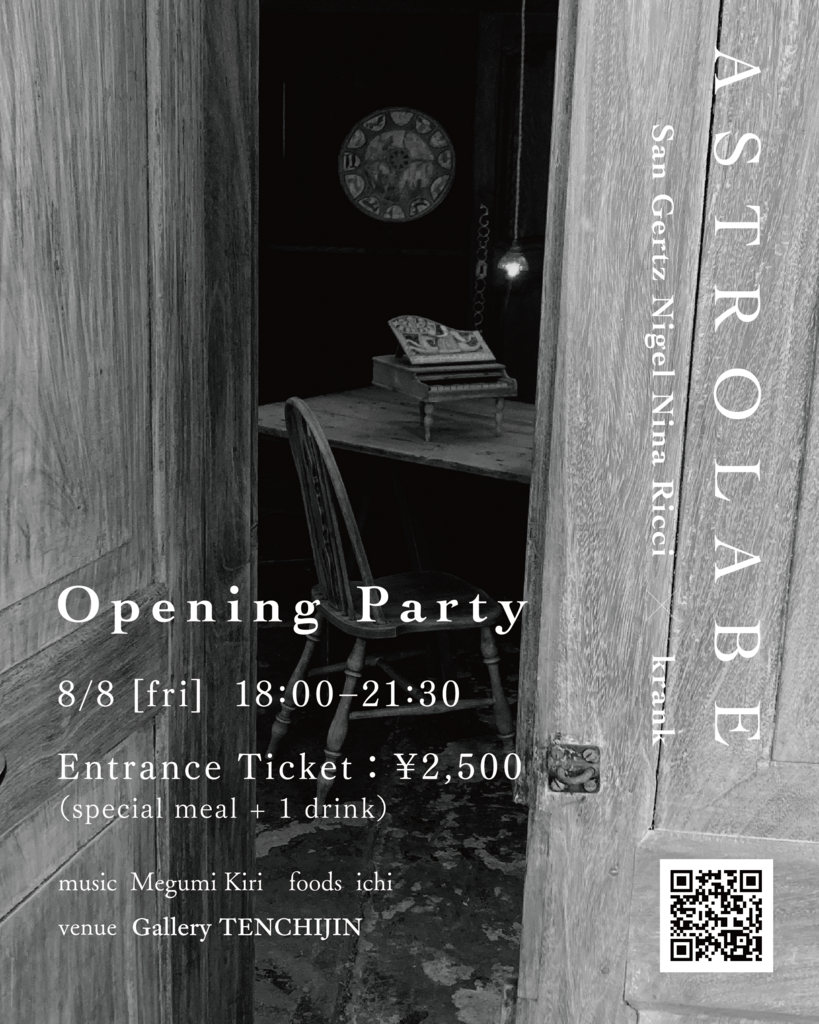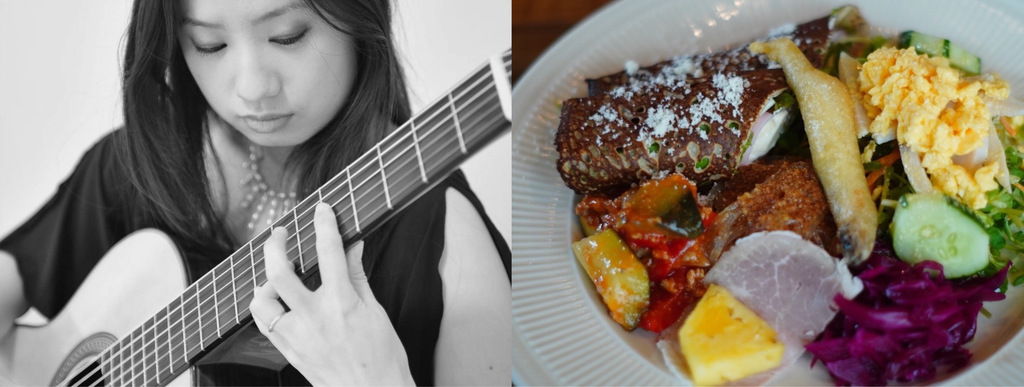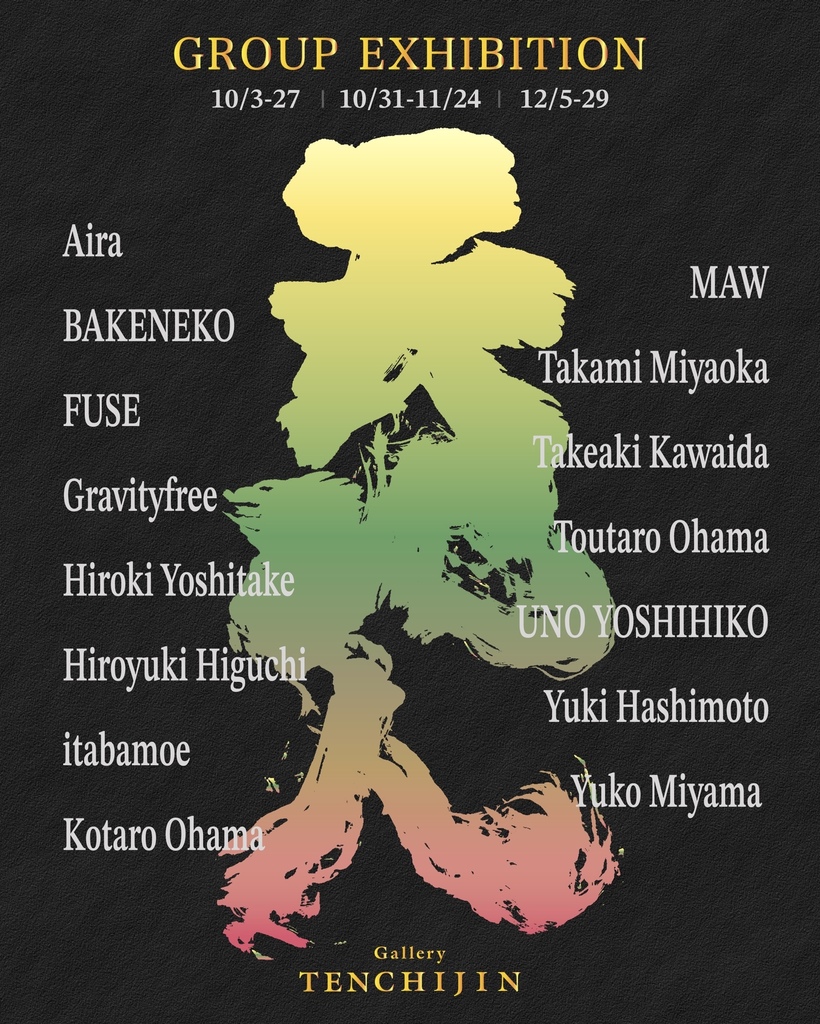
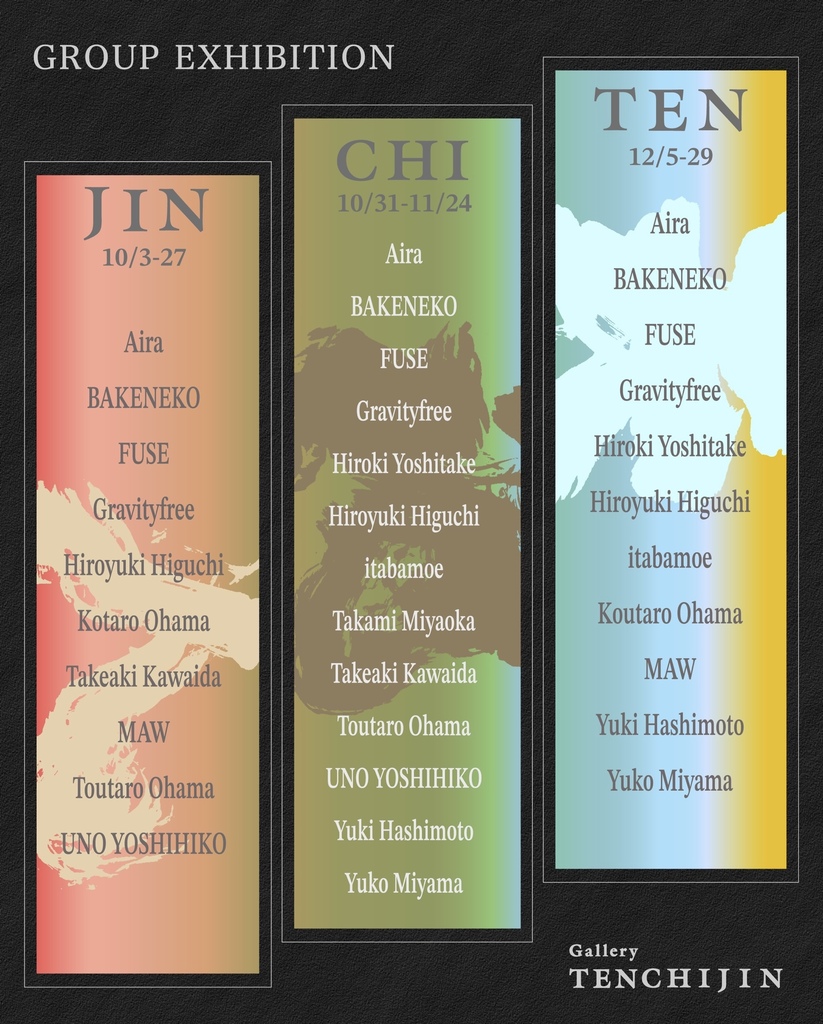
GROUP EXHIBITION “ 天地人 TEN CHI JIN ”
2025.10 – 12
3 Chapters / 3 Weeks Each
第一章 JIN | 10.3 fri – 10.27 mon
第二章 CHI | 10.31 fri – 11.24 mon
第三章 TEN | 12.5 fri – 12.29 mon
人は、天を仰ぎ、地に立ち、
そして、人と人のあいだに生きる。
その三つの視点から、
世界とのつながりを見つめ直す。
⸻
Artist
Aira / Instagram
BAKENEKO / Instagram
FUSE / Instagram
Gravityfree / Instagram
吉武弘樹 / Instagram
Hiroyuki Higuchi / Instagram
itabamoe / Instagram
大濱 孝太郎 / Instagram
MAW / Instagram
宮岡 貴泉 / Instagram
川井田 健晃 / Instagram
大濱 とうたろう / Instagram
UNO YOSHIHIKO / Instagram
橋本悠希 / Instagram
宮間夕子 / Instagram
Curated by @burnerman7
※ 出展作家は予告なく変更・追加となる場合がございます。
⸻
Statement ― TEN CHI JIN
世界はあふれる情報に満ち、
ときに自分の感覚が遠ざかってしまう。
この展示では「天・地・人」という三つの視点を手がかりに、
アーティストのまなざしを通して、
世界とのつながり、自分自身の輪郭を確かめていく。
天──祈りや想像、かたちのない存在とのつながり。
地──大地や自然、風や水、光の確かな感触。
人──身体や感情、記憶、他者との関係性。
強い主張ではなく、ただ今を正直に描き出す。
揺るぎない、確かな誠実さを宿して。
大地は脈打ち、土は還し、火は燃え、水は流れ、風は運ぶ。
その働きにふれるとき、心は震える。
「描きたい」「つくりたい」という衝動は、
大地の鼓動と共鳴する命の震えにほかならない。
それは創造の原点であり、祝祭のはじまり。
大地と、作家と、観る者が同じ鼓動を分かち合う場。
そこで交わる震えが、生きることの根源を呼び覚ます。
すべての表現者たちへ、敬意を込めて。
⸻
GROUP EXHIBITION “ 天地人 TEN CHI JIN ”
2025.10 – 12
3 Chapters / 3 Weeks Each
第一章 JIN | 10.3 fri – 10.27 mon
第二章 CHI | 10.31 fri – 11.24 mon
第三章 TEN | 12.5 fri – 12.29 mon
入場料 | 500円(18歳以下無料)
外に設置されたガチャを回して、缶バッジをお受け取りください。
その缶バッジが入場チケットとなります。
展示している作品はすべてご購入いただけます。
プライスリストは会場またはInstagramのDM、メール等にてご案内しております。

